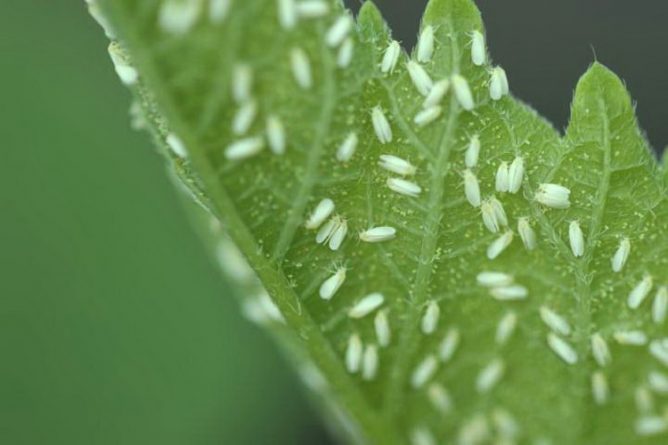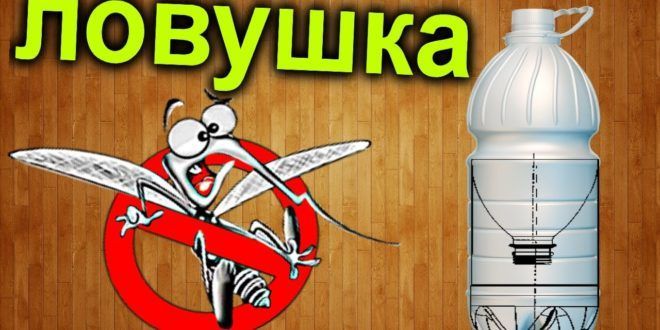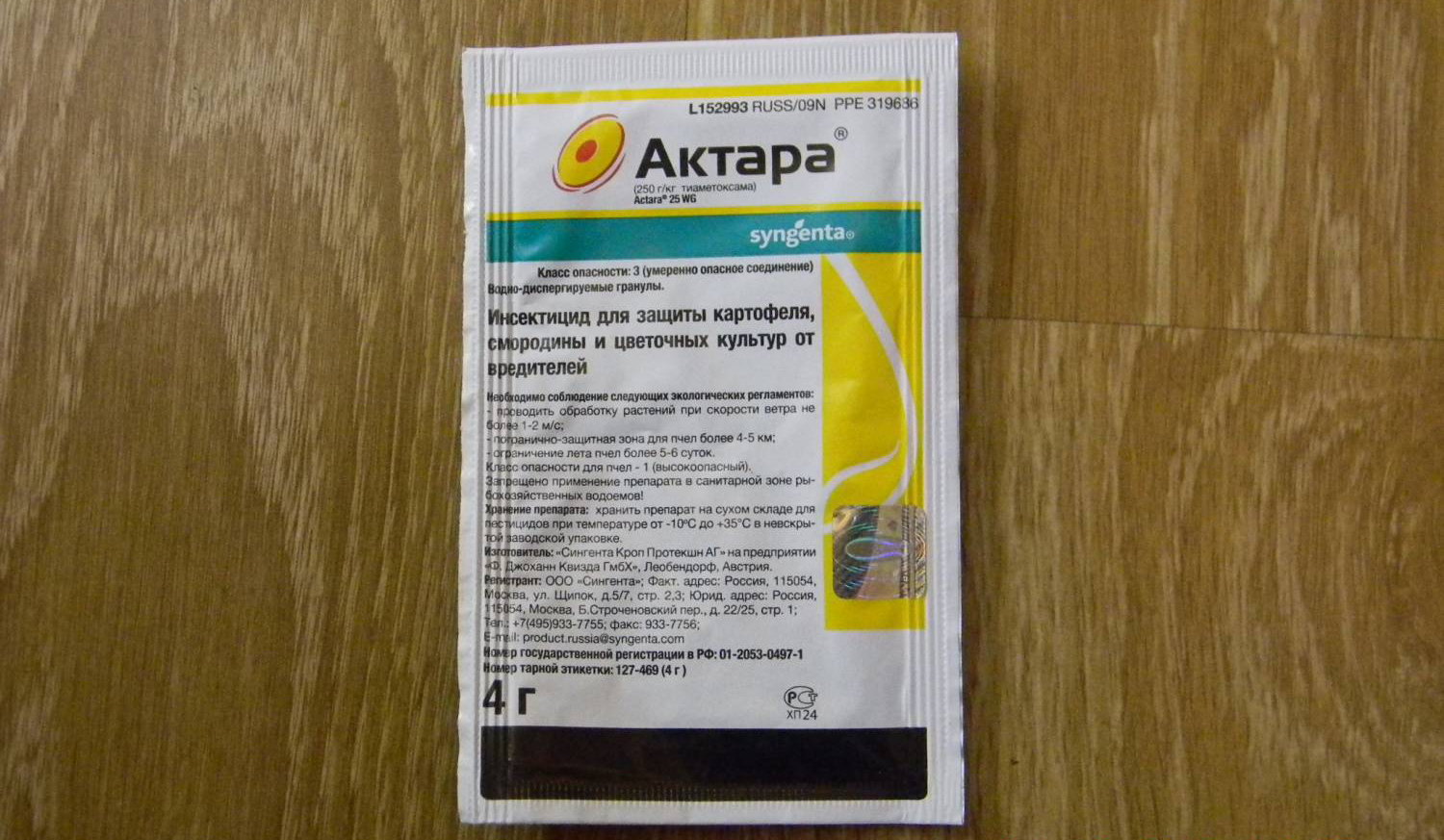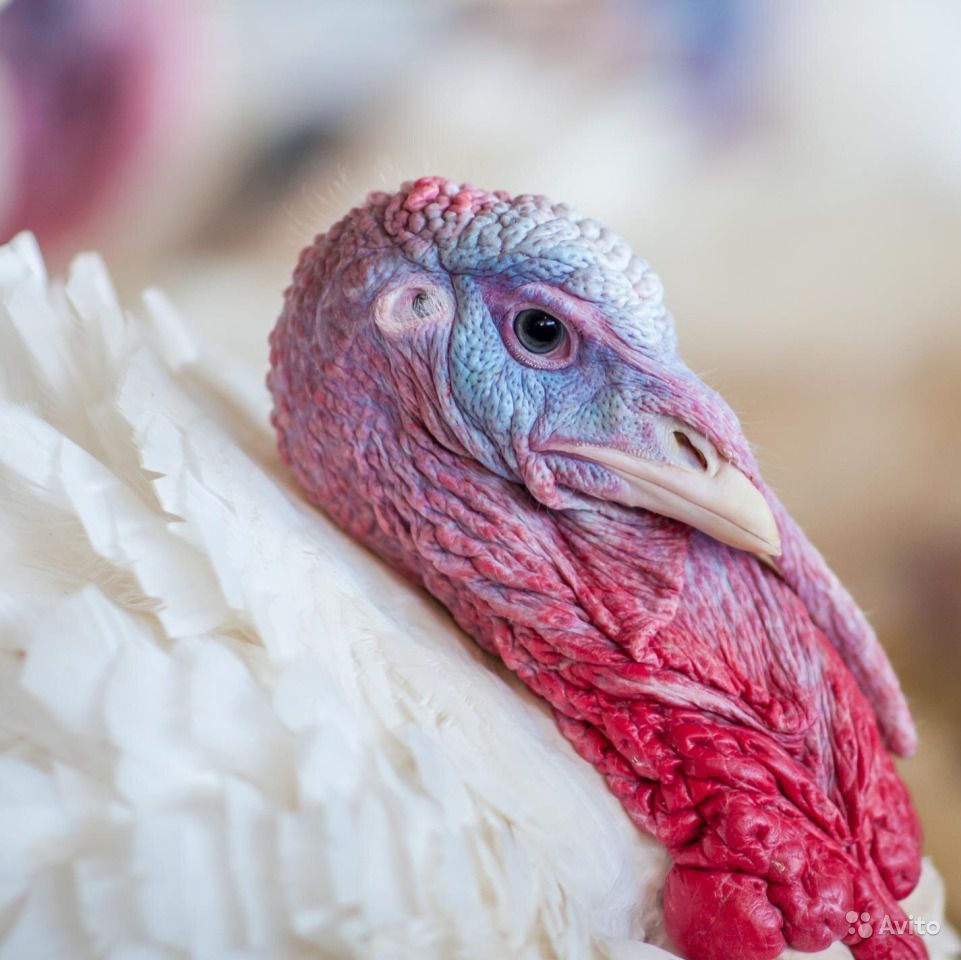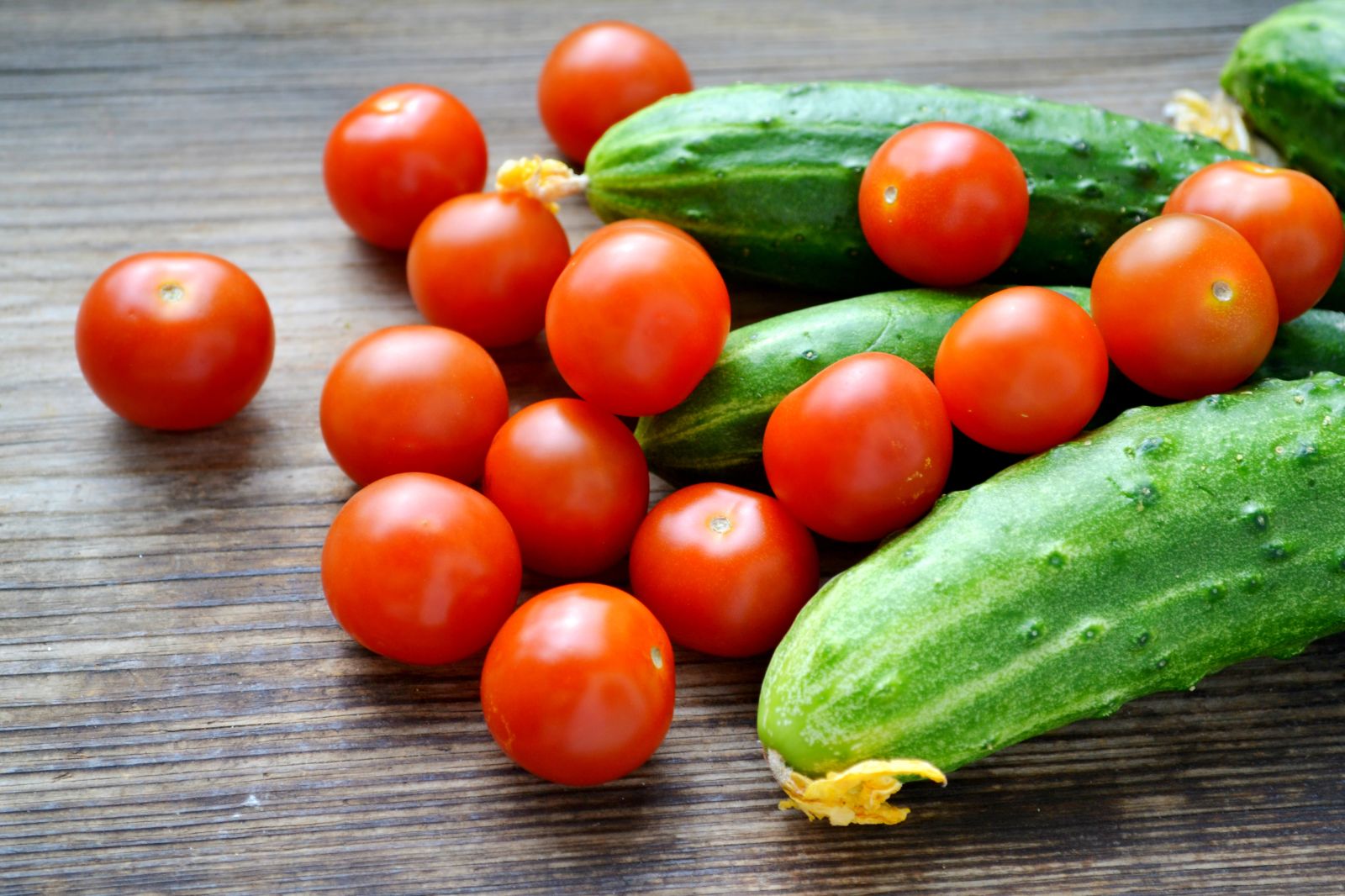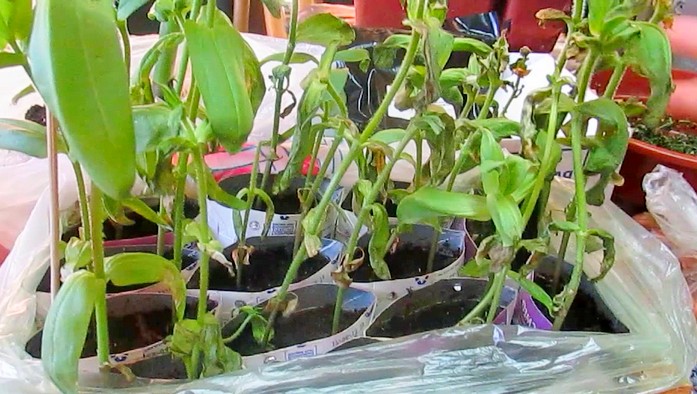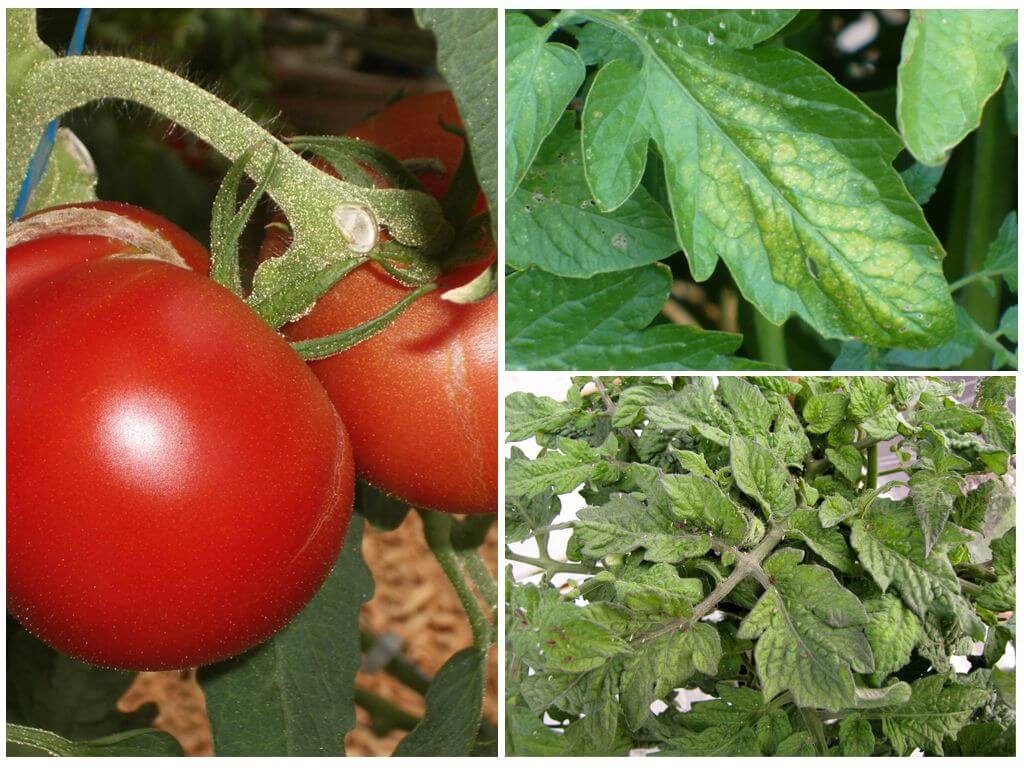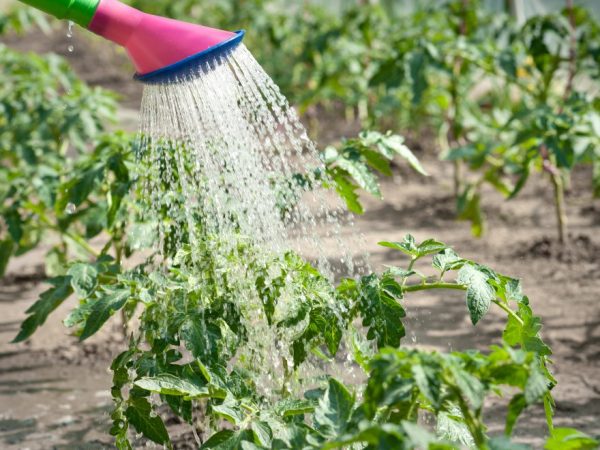Content:
Tomatoes are among the most valuable domestic vegetable growers culture, which, with proper care, will provide the family not only in the season, but also allow you to stock up on conservation for the winter. However, this plant is not so easy to grow, and even more difficult to save it from diseases and pests.
Briefly about tomatoes and their pests
Modern varieties are unpretentious and give a rich harvest with minimal effort. But caring for a tomato requires knowledge and skills. Difficulties begin from the first days of growing seedlings. A little later, gardeners have another headache - how to get rid of pests and prevent diseases with the help of drugs or folk remedies.
Tomatoes belong to the nightshade family, which many "love" insects and bacteria-pathogens... Of the latter, these are:
- Blackleg. First, the root collar becomes dark in color, then rots, which leads to a thinning of the stem and death of the plant. The disease spreads quickly and can destroy a plantation in a short time.
- Phytophthora affects leaves and fruits that dry and rot. It can kill 80% of all plants when infected.
- Brown spot appears at high humidity or low temperature. This is a fungal disease. Spores are easily tolerated and can persist in the soil for a long time. Symptoms are brown spots on the underside of the leaves with a gray coating.
- Mosaic, not amenable to treatment, is one of the most dangerous diseases of tomatoes. When infected, pigment spots are formed that resemble a mosaic. Further, the leaves of the tomato curl and wrinkle, and the bush fades before our eyes.
- Gray and brown rot, the appearance of which is promoted by coolness and humidity. A tomato is infected if first small and then large watery spots are seen on the fruit.
As for pests, the most dangerous are:
- root-damaging nematodes;
- spider mite;
- scoop caterpillars that spoil the aerial parts;
- a sprout fly that affects tomato seedlings. The eggs are in the ground, with the heat the larvae appear, damaging the sprouts.
In addition, the Colorado potato beetle and aphids can spoil the tomato crop.
White midges on tomatoes
White flies on tomatoes are another attack for gardeners. They wonder what the white fleas are on the tomatoes? These insects are whiteflies, which almost instantly increase in numbers and, if not taken to eliminate them, will leave the plantation without a crop. Small moths attack greenhouse crops, but can destroy plants in open areas.
Having found white midges on tomato seedlings, you need to get rid of them urgently. This insect is one of the most dangerous pests of nightshades, cucumbers, and therefore threatens the entire site. Finding white midges on tomato seedlings is not difficult: if you touch a bush, insects fly away. Also signs of the appearance of parasitic white insects are:
- The leaves dry and curl, a bloom appears first white, then blackening. Plaque - a sooty fungus called black, which goes to the stems and ruining crops.
- Tomatoes are white inside.
- The aboveground parts turn yellow, giving the impression that the bush is lacking moisture.
- Ripening of tomatoes is uneven.
The white fly on tomatoes is also dangerous because it can also infect viral diseases, such as curly foliage, chlorosis and jaundice.The main harm is caused by the larvae, so if only butterflies are on the seedlings, the crop can still be saved.
Midges in tomato seedlings: how to get rid of
White flies on tomatoes are not afraid of chemistry, but, nevertheless, there are effective ways to combat them:
- fumigation;
- biological methods;
- folk ways;
- preventive measures.
Fumigation with sulfur bombs in the greenhouse helps to get rid of not only midges, but also their offspring. This method is best combined with the use of insecticides and chemicals, such as Confidor extra, Aktara, Pegasus, Phosbecid. Spraying is recommended twice to ensure the destruction of the pest. Processing activities are carried out in warm dry weather, after spraying, the bushes are covered to create shade. It is better to re-treat it with another drug in order to destroy insects with immunity to the first remedy.
The biological method is considered the most gentle option. It can be used even during flowering and fruit formation. The method is based on the inclusion in the fight of natural enemies of the whitefly - encarsia, which is an insect-entomophage, which parasitizes on the eggs of the whitefly. To unleash a "war", the pupae of the parasite are placed on cardboard sheets to the bush, from where they move to the plants and infect the larvae of the whitefly.
From folk remedies, hardening can be cited as an example. Pests do not like low temperatures, therefore, if possible, it is necessary to take seedlings to a cool place more often if the whitefly starts up on the window.
Traps with glue give a good effect. To do this, glue is applied to the yellow-colored scraps of plywood or cardboard and a trap is placed on the bush. You can use fly tape instead.
Another great folk remedy is to wipe the leaves with infusions of garlic, yarrow, or soapy water. 150 g of chopped garlic cloves are added to 1 liter of water and infused for 5 days. Then add another 6 l of water to the concentrate and spray the plants.
To make a soap solution, a piece of laundry or tar soap is grated and diluted with water to a liquid form, and then the bushes are carefully treated with a spray bottle. This product can be applied repeatedly.
However, it is better to prevent the appearance of midges than to puzzle over how to get rid of it. Therefore, it is important to use preventive measures from the first days of planting seeds for seedlings:
- more often ventilate the room where there are young tomato bushes;
- disinfect;
- dig up the plot more often, especially before planting seedlings;
- do not store compost at home, which is a bait for whitefly.
Black midges on tomato seedlings
The black midge, also called the summer cottage aphid and leafhopper, is also a dangerous insect. Ants and lethargy of plants testify to its appearance, despite the ongoing treatments and watering. It is worth looking at the back of the leaves and it becomes clear that a pest has appeared - a black midge on tomatoes. Many gardeners know how to deal with it, and this must be done immediately.
Of the preventive measures, the following are known:
- planting fragrant herbs that attract wasps, lacewings, hoverflies, ladybirds;
- planting crops that repel black midges: onions, garlic, calendula, dill;
- weed control;
- destruction of anthills.
If, despite the preventive measures, the black midge still appeared, you will have to resort to radical measures - chemistry. Preparations based on fatty acids, vegetable oils and pyrethrins are considered milder. The following remedies are effective against aphids:
- Aktafit;
- Fufanon;
- Aktara;
- Inta-vir;
- Fufan.
If there is no desire to water tomatoes with chemistry, then you need to adopt folk remedies.For example, processing with the same soap solution. There are three options:
- 2 tbsp. tablespoons of liquid soap are mixed with 0.5 liters of water and 250 ml of sunflower oil are added;
- 20 g of chopped laundry soap and 1 tbsp. ash is mixed with 10 liters of hot water;
- 2 tbsp. tablespoons of liquid soap are mixed with 5 crushed garlic cloves, 1 tbsp. sunflower oil, 0.5 l of water, infused for 1 hour.
In the fight against black flies, infusions for spraying have proven themselves well:
- in 5 liters of water for 3 days, 3 cloves of garlic, 20 g of hot pepper and 3 teaspoons of mustard are insisted;
- in 3 liters of boiling water, brew 200 g of onion husks;
- 400 g of celandine is infused for 1 day in 1 liter of water, then boiled over low heat for 30 minutes. The filtered composition is diluted with 10 liters of water and insisted in a cool dark place for another 2 days.
These solutions are used to treat black midges not only from bushes, but also from the soil under them.
Numerous insects can kill the nightshade, although all modern varieties are hybrids. Such plants have no natural defenses against fungal diseases and insects. In this regard, tomato plantations need constant protection from diseases and parasites. Therefore, it is necessary to regularly carry out preventive measures, and if the plants are still struck by an ailment or some kind of midges, you need to immediately take action to save the tomato.
